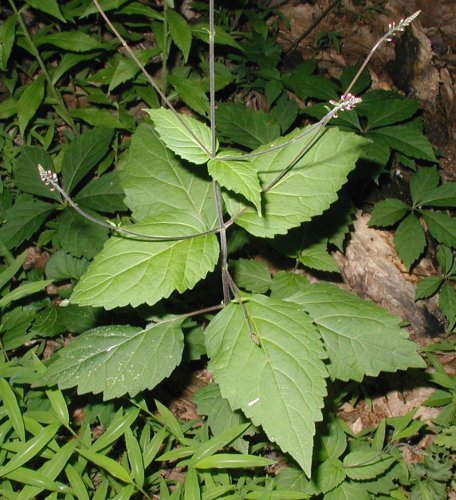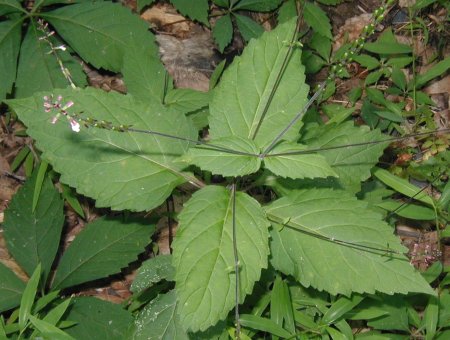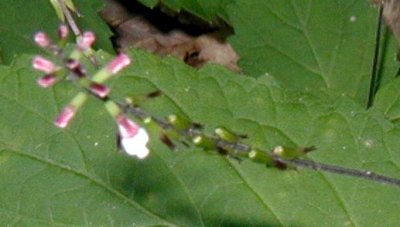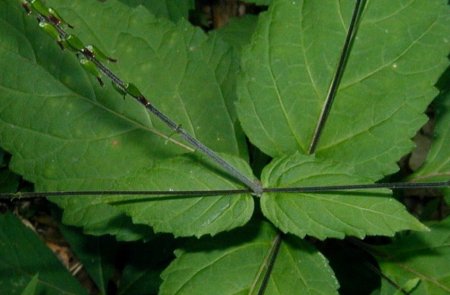Lopseed is remarkably purple on the stems and in flowering. In fact the deep purple color is what drew my eyes to it for the first time. Another lane-side inhabitant, Lopseed, Phryma leptostachya, flowered in July here in Central Pennsylvania.
Flowers are about a quarter inch long and placed in pairs along spikes that rise up from the leaf axils and from the terminal stem. As each flower dies back it lays down along the stem giving the plant its name “lopseed”.
Leaves are paired, opposite one another and coarsely toothed.
Lopseed has the distinction of being the only member of its genus, Phryma, due to its unique seed-lopping behavior. Some taxonomists even place this plant in its own family, Phrymaceae.

Lopseed plant with flower stems arching up from the leaf axils. Photo taken 11 July 2008.

Lopseed, a perennial that reaches 2-3 feet tall, grows in wooded areas. Photos taken 21 July 2008.

Blossoming flowers and lopping seeds of Lopseed.

Purple stems and opposite, toothed leaves of Lopseed.
Lopseed root tea has been used by Native Americans for treating sore throats and for treating rheumatism. Roots hold some insecticidal powers as evidenced by its use in Asia for treating skin problems and insect bites.